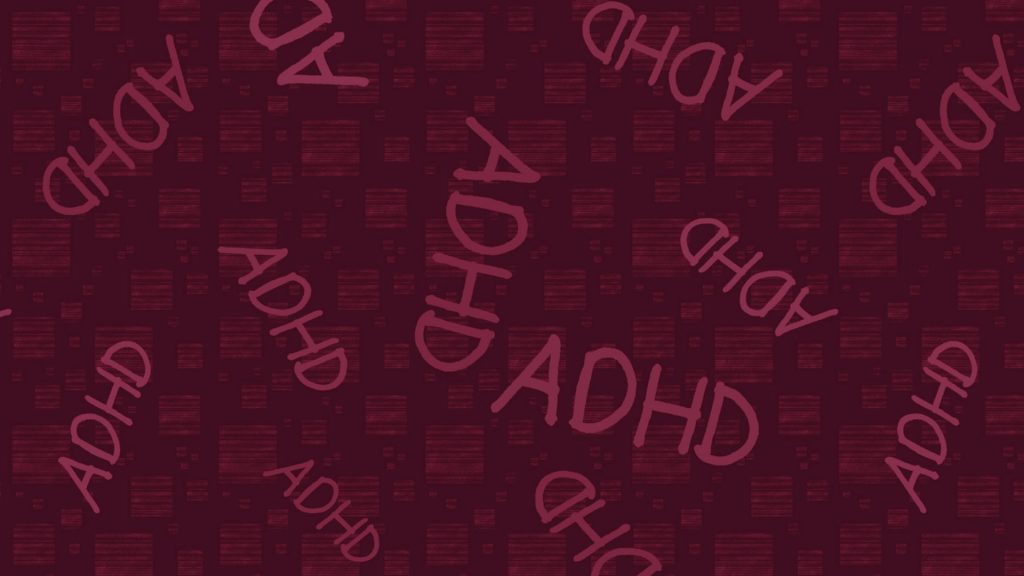Attention Deficit/Hyperactivity Disorder (ADHD) is a neurodevelopmental condition marked by ongoing difficulties with inattention, hyperactivity and impulsive behavior, which disrupt functioning at school, work, or in daily life. It is usually identified in childhood, although many individuals remain undiagnosed until adolescence or adulthood.
When it comes to the cause, research indicates that there is a strong genetic component. This genetic factor leads to neurodivergence (difference in brain development), especially in areas of the brain responsible for executive functioning and attention regulation, such as the frontal lobe.
Other environmental factors, such as premature birth, substance use during pregnancy, or exposure to environmental toxins can contribute to the development of ADHD, but don’t directly cause it.
DSM-5 definition, symptoms, and subtypes

In order to meet DSM-5 criteria for diagnosis, ADHD symptoms must be present for at least six months, persist in at least two settings (ex. home and school or work) and negatively impact social, academic and occupational functioning.
Symptoms must have appeared before the age of 12, and the core features fall under two main categories: inattention and hyperactivity-impulsivity.
Inattention refers to persistent difficulties directing attention and focusing on tasks or instructions. Individuals struggling with inattention may appear forgetful, easily distracted, or disorganized, or struggle to complete activities that require constant focus (ex. listening for a longer period of time or reading long paragraphs). On the other hand, individuals can be hyper-focused on topics of their interest. The problem for people struggling with ADHD is in regulating directed attention to non-preferred tasks, while automatic, interest-driven attention remains unaffected.
Hyperactive-impulsivity is characterized by excessive physical movement, restlessness, talking, and acting without thinking. Hyperactivity may present as fidgeting, difficulties staying seated, excessive talking or difficulties with patience (ex. waiting for their turn). In addition, impulsivity is often shown in interrupting other people’s activities, blurting out answers, or finishing other people’s sentences, and making quick decisions without thinking. While hyperactivity symptoms often decrease with age, impulsivity can remain in other forms, such as abrupt emotional reactions or impulsive spending.
Three subtypes based on symptoms presented are outlined in DSM-5:
- Predominantly Inattentive Presentation, whereby individuals mainly struggle with attention, organization, and follow-through. This category is commonly described as “day-dreamy” and disorganized rather than disruptive.
- Predominantly Hyperactive-Impulsive Presentation – physical restlessness, excessive talking, and impulsivity are dominant symptoms in this subtype.
- A combined presentation can have both inattentive and hyperactive-impulsive symptoms.
Treatment
Although ADHD can’t be cured, a wide range of evidence-based treatments can significantly reduce symptoms and make this condition more manageable in daily functioning.
Medication
Medication is usually the first-line treatment for ADHD. Two main pharmacological categories of medication are used to treat this condition:
Stimulants (methylphenidate-based and amphetamine-based medications) increase dopamine and norepinephrine (neurotransmitter) activity in the brain, enhancing focus and impulse control. They usually come in two groups:
- Immediate-release (ex. Adderall) tablets work quickly but only last three to five hours, so they need to be taken a few times a day. They can also result in lower mood, hunger, tiredness, and irritability as the dose fades.
- Extended-release (ex. Adderall XR) tablets release the dose slowly throughout the day, usually lasting anywhere between seven and twelve hours. They are taken once during the day, usually in the morning.
Non-stimulants are used as alternatives if stimulants are ineffective or not tolerated. They take longer for effects to be visible, sometimes requiring weeks of consistent use, however they can provide symptom relief for up to 24 hours, and they have a lower risk of appetite loss or sleep disruption when compared to stimulants.
Non-stimulant medications include:
- Norepinephrine reuptake inhibitors (ex. Atomoxetine) work by blocking the brain from reabsorbing norepinephrine too quickly, leading to improved attention and impulse control.
- Alpha-2 adrenergic agonists (ex. Clonidine) work by stimulating receptors in the brain that help regulate how much norepinephrine is being released, therefore reducing hyperactivity.
It is important to note that stimulants are classified as controlled, while non-stimulants are not. This means stimulants are more likely to cause dependency or misuse, and as a result, their usage is closely monitored. Some state laws even restrict the number of stimulant medications an individual can receive at once.
Psychotherapy and behavioral strategies
Other evidence-based approaches to treating ADHD include:
- Behavioral therapy helps individuals develop skills necessary for organization, planning, and self-monitoring. With children, it emphasizes a structured reward system: set specific behaviors, reward them immediately and consistently (with points, stickers, privileges), and embed them in clear routines.
- Cognitive-behavioral therapy (CBT) has shown a positive effect in helping adolescents and adults with ADHD. It focuses on restructuring an individual’s negative patterns of thinking while also addressing emotional challenges and co-occurring symptoms of anxiety or depression.
- Parent training programs are a way for parents or caregivers to learn how to encourage their children’s positive behaviors and respond to negative behavior, while also establishing a consistent routine for their child.
- Social skills groups focus on teaching children social skills when interacting with their peers in a supervised setting.
- Lifestyle adjustments can play an important role in the management of ADHD symptoms. Individuals can benefit from regular physical activity, structured daily routines, adequate sleep, and using tools such as planners, timers, and reminder systems to help with memory and organization.
Further resources
- Centers for Disease Control and Prevention (CDC) – ADHD Resource Center.
- Children and Adults with Attention Deficit Hyperactivity Disorder (CHADD) – a non-profit foundation helping people diagnosed with ADHD by providing tools, strategies and support.
- American Academy of Child and Adolescent Psychiatry (AACAP) – ADHD Resource Center.
- Child Mind Institute – LEGO Therapy Social Skills Group.